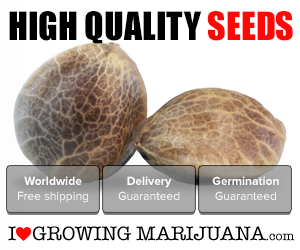From the hash and honey oil of the hippie era to the array of consistencies today, concentrates have evolved over time and they’ve come a long way. The 420 holiday, celebrating all things cannabis, gave way to another holiday: 710.
The Brotherhood of Eternal Love first smuggled in hash oils from Kabul, Afghanistan in the late ‘60s before concentrates were being made domestically. Honey oil methods were refined by the early ‘70s, with a few notorious concoctions that were made by pressing bricks of hash with an industrial press. A book entitled Cannabis Alchemy: The Art of Modem Hashmaking, written by David Hoye, was published in 1974, selling 100,000 copies. Another book, providing the same procedures, is Marijuana Potency, written by Michael Starks, was published 1977. Both books were available from book dealers who advertised in High Times at the time.
Butane honey oil (BHO) and alcohol-derived oils were constantly evolving, and Starks took it further to describe various solvents. In the May 1989 issue of High Times, there’s wild instructions of how to build your own vaporizer for oil-based concentrates, with three methods including an adjustable model: Just grab household items like a rotary light-dimmer, a 12-volt auto bulb, and a transformer.
Sean Black wrote for High Times that its founder Tom Forçade was instrumental in generating interest in cannabis concentrates during the early days. The consistencies of hash, oils, and various other concentrates continued to evolve in steps.
Its origin is definitely up for debate, but rosin was introduced to the cannabis community through ICMag in 2006 by forum member Compashon, Weedmaps reports.
“Up until 2009, mostly water hash (or bubble hash, as it came to be known) and various kief products could be found on dispensary shelves in the U.S.,” Black wrote. “Some concentrates made with solvents were available, but most were subpar and stayed fairly unnoticed. It wasn’t until 2010, when the first U.S. Cannabis Cup was held in San Francisco, that these newer types of concentrates first appeared in a Cup competition, thereby introducing ‘dab’ culture to a broader audience.”
Tinkering with temperatures and processes gave way to many forms, much in the way that sugar can be converted into endless consistencies. Enter crumble, honeycomb, wax, sauce, diamonds and sauce, you name it.
710 As a Holiday
420 is a much older holiday, and the most credible story centers on five students at San Rafael High School in Marin County, California in 1971 who would meet at 4:20 p.m. by the campus’ statue of chemist Louis Pasteur to toke up. 710 as a holiday didn’t become a thing until about ten years ago. The first time that High Times featured dabs (and called by that name) on the cover of the magazine was in the October 2012 issue.
In 2013, cannabis-friendly outlets like High Times, Weedmaps, and LA Weekly started reporting on 710 as a holiday for the first time. Then, the first official 710 celebration—The 710 Cup, took place that year in Denver, Colorado.
In 2015, Phil “Soilgrown” Salazar accidentally made rosin after oil leaked out of wafer-thin sheets of poor quality hash he was pressing, and started posting photos. It caught on, though people were probably doing similar processes earlier.
Concentrates are continuing to evolve. In 2019, a new form of solventless concentrate emerges: Piattella. Hassans710, a European hash brand has been producing Piattella since 2019 and described it as the result of “cold curing full-melt [hash] to achieve a premium level of terpene retention.”
Read the full article here









